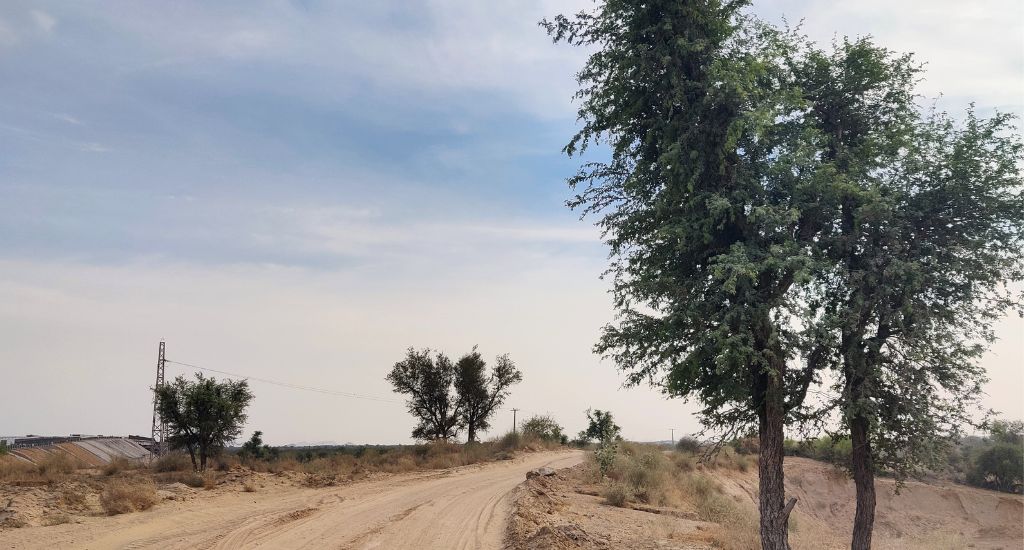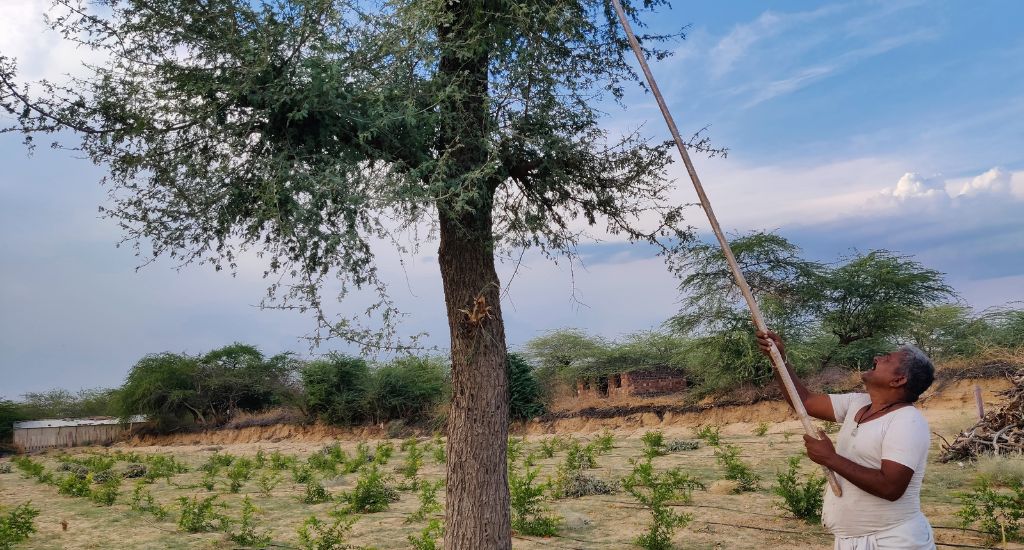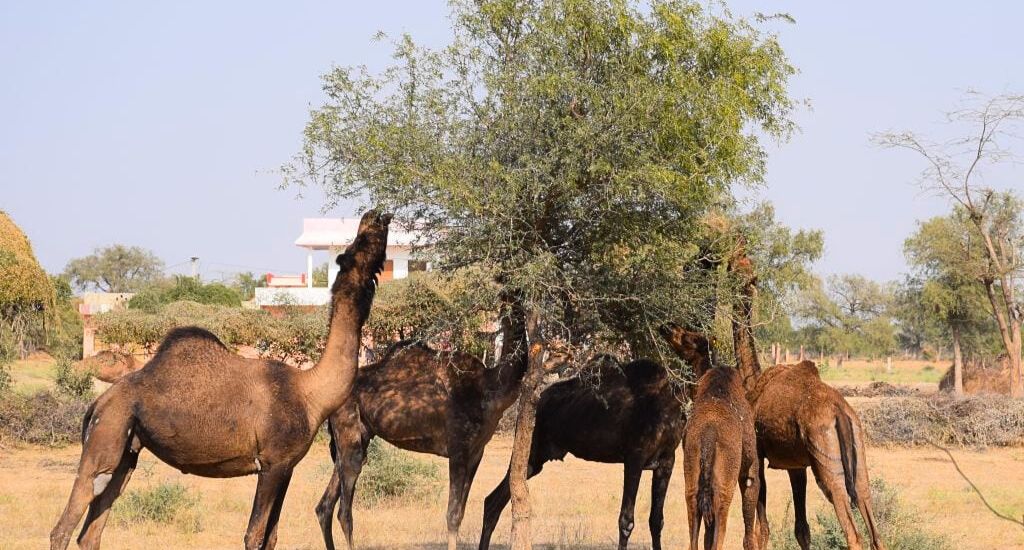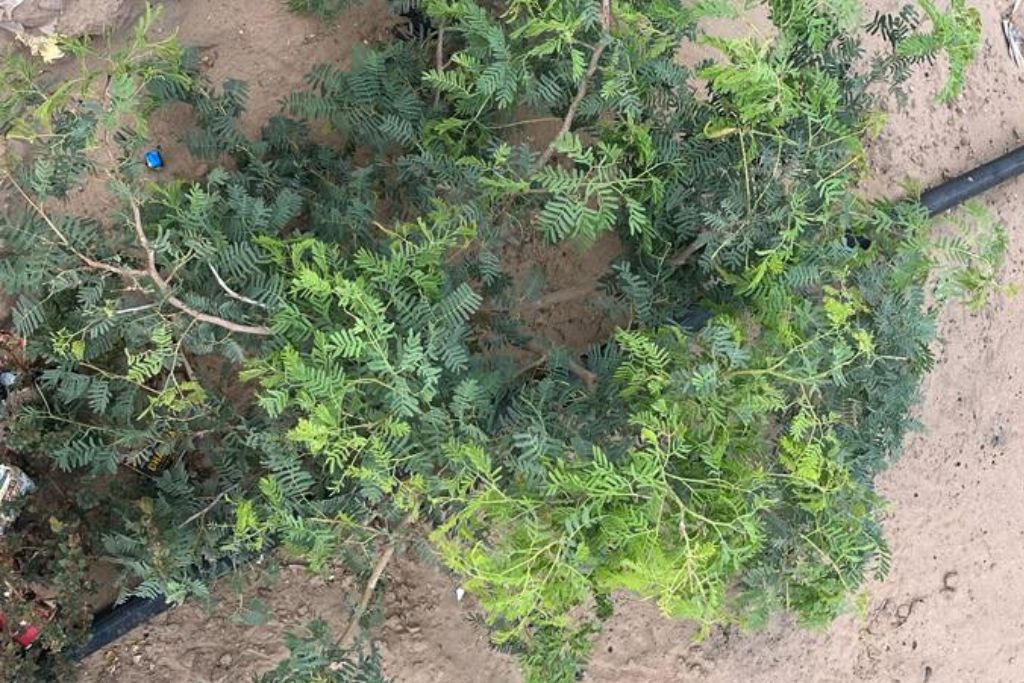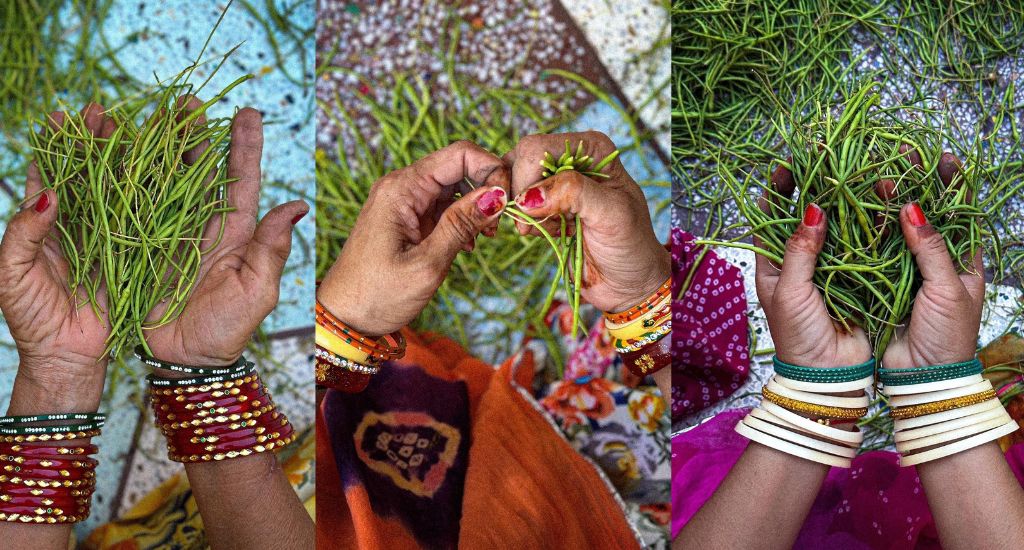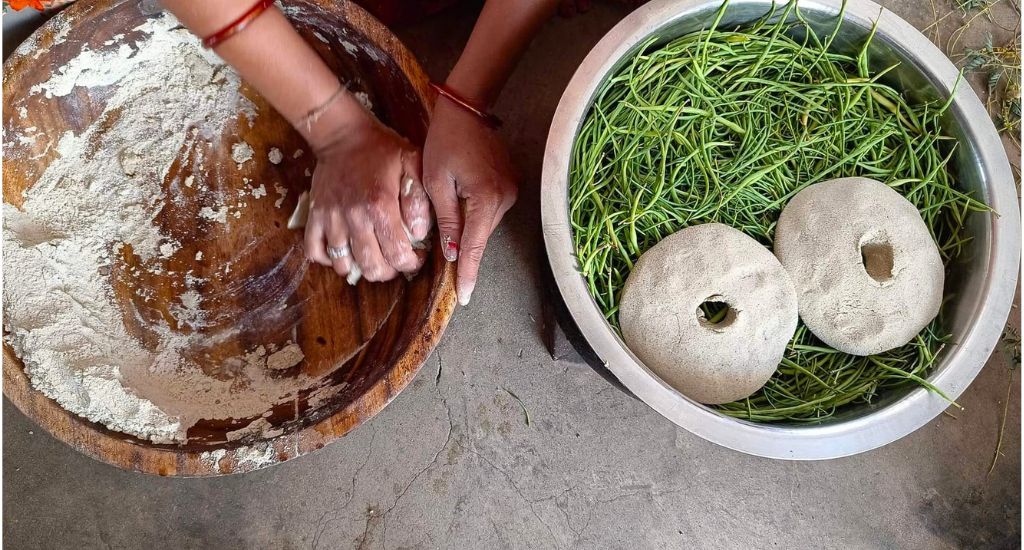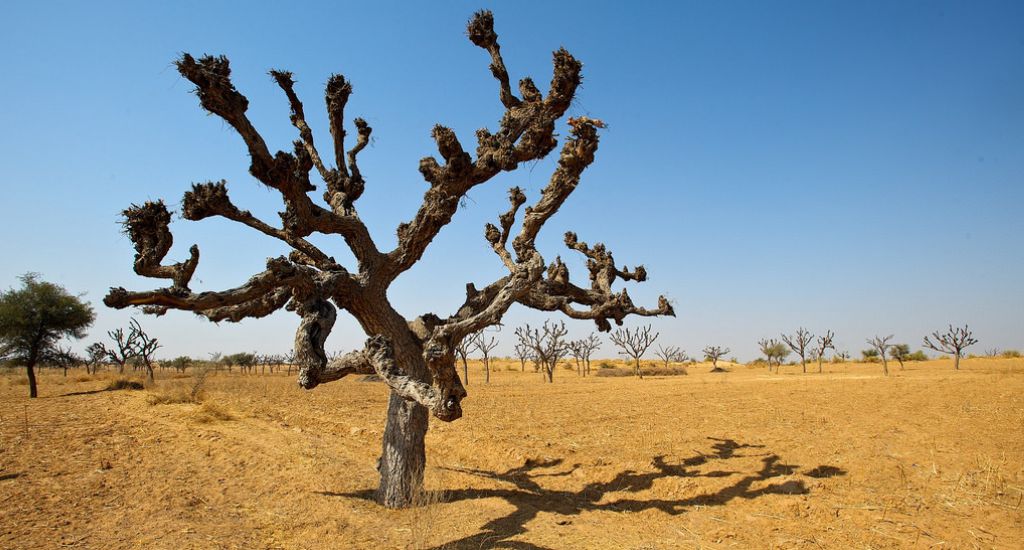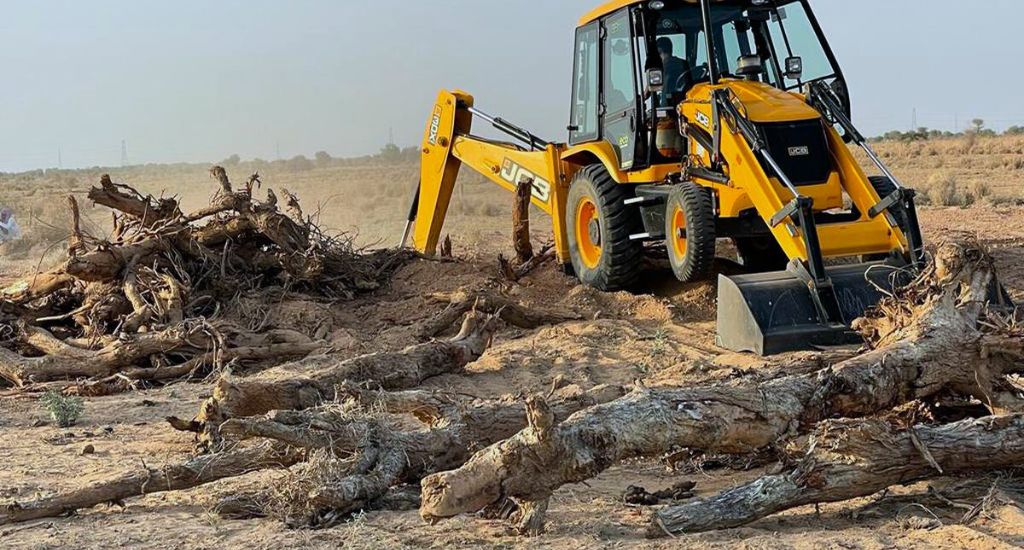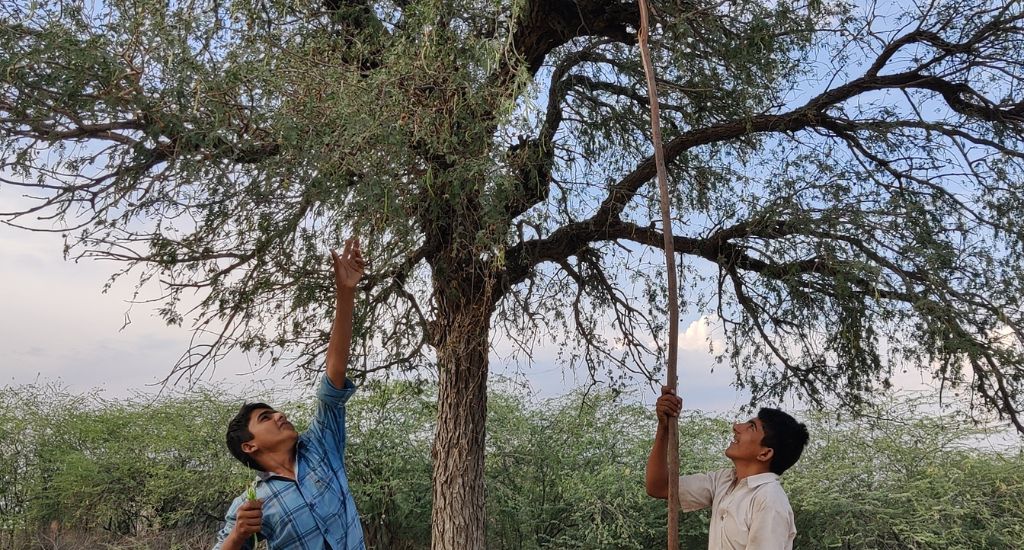
Khejri – the wonder tree of Thar desert
The khejri tree is a lifeline for the desert ecosystem in Rajasthan as it provides food and shelter to many animals, besides being used by humans for its fruit and leaves.
In the vast expanse of Thar desert of Rajasthan, water is scarce and the scorching heat makes survival a challenge for the people and animals living in the area. The Khejri tree is one of the few species that meet the challenge head on. Khejdi or khejri (Prosopis cineraria), also known as shami in Rajasthan, is a hardy, drought-resistant tree that has been a symbol of survival in the harsh desert.
The Thar Sobha variety of the Khejri tree is planted in June-July. This becomes a source of income after three years, said Sujana Ram, a farmer from Barmer. He has planted 2,000 trees in his field from which he earns over Rs 2 lakh annually. Khejri provides food and shelter to many animals, besides being used by humans for its wood, fruit and leaves.
The Khejri leaves, locally called luk, are used as nutritious feed for domestic animals such as camels, goats, sheep, etc. They are also an easy source of abundant energy for herbivorous wild animals like the black buck, chinkara and nilgai. Many insects also thrive on the khejri tree.
Thar Shobha is a special type of khejri plant that is prepared through in-situ budding, said Dr. BL Meena, an agricultural scientist at Barmer. Its height is only 6-7 feet and its leaves are sold at a rate of Rs 1,200 per quintal.
The tree bears small pods (called sangri) that are 5-8 cm long and 1 cm wide. Sangri is a good source of income for rural farmers, especially women and children, in summer. The slender pods, sold for about Rs 1,200 per kg, are edible and used to prepare local delicacies like panchakutta or ker sangri.
The famous sangri vegetable of Rajasthan is an important part of the regional cuisine. It is eaten as a staple food in summer along with ghee-topped millet rotis. It is in great demand in Germany, where it is sold for around Rs 5,000 per kg.
Among the many reasons behind the decline in the population of the Khejri tree is root borer and fungal (mildew) infections, according to the Central Institute for Arid Horticulture, Bikaner. Celosterna scabrator is a root borer that penetrates the bark of weak roots and hollows them out by making tunnels inside the roots. Ultimately, it forces the tree to dry up.
Khejri tree is facing many threats. It is being continuously cut in Barmer, Jaisalmer, Jalore and other districts of Rajasthan to make space for pomegranate cultivation since it is believed that the presence of any other tree for the pomegranate orchard is harmful to the fruit crop.
The lead image shows two boys plucking Sangri from a khejri tree in Barmer Rajasthan.
Salim Attar is a freelance journalist based in Barmer Rajasthan.
